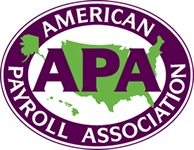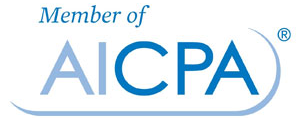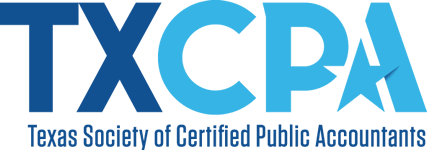
Charles Read, CPA, USTCP, IRSAC
President/CEO GetPayroll
Find me on LinkedIn
Every business must retain certain records on their current and past employees, but which ones and for how long?
On the federal level, there are two agencies that regulate record keeping. First is the IRS, which is responsible for enforcing the Internal Revenue Code. The second is the US Department of Labor (DOL). The Wage and Hour Division of the DOL is responsible for enforcement of the Federal Fair Labor Standards Act (FLSA), the Family and Medical Leave Act (FMLA), the Immigration Reform and Control Act (IRCA), and the laws governing wages paid by federal government contractors.
Both of these agencies have separate rules regarding the type of records that must be kept and the length of time you must keep the records. To further complicate your requirements, there are numerous state, local, and other regulatory agencies that may require additional record keeping. State agencies enforce state unemployment insurance tax acts, state wage and hour laws, child support and creditor garnishment laws, and unclaimed or abandoned wage requirements.
Keeping these records accurate and up to date is extremely important to the health of your business. Without the proper records, you will be unable to meet regulatory requirements should you be audited by any of various federal state and local agencies. Failing to meet these requirements can mean large penalties and the potential for large settlement awards should you be unable to provide the required information when requested.
INTERNAL REVENUE SERVICE
The following records must be kept for four years after the tax due date or the actual date paid:
- Name of employee.
- Address of employee.
- Occupation of employee.
- Social Security number of each employee.
- Total compensation and date paid including tips and noncash payments.
- Compensation subject to withholding for federal income, Social Security and Medicare tax.
- Pay period for each compensation period.
- Explanation of difference in total compensation and taxable compensation.
- Employee’s Form W-4.
- Dates of employment (beginning and ending).
- Employee tip reports.
- Wage continuation made to an absent employee by employer or third party.
- Details of fringe benefits provided to employee.
- Copy of employee’s request to use the cumulative method of wage withholding.
- Adjustments or settlement of taxes.
- Amounts and dates of tax deposits.
- Total compensation paid to employee during calendar year.
- Compensation subject to FUTA.
- State unemployment contributions made.
- All information shown on Form 940.
- Copies of returns filed (Forms 941, 943, W-3, Copy A of Form W-2 and returned Form W-2s).
DEPARTMENT OF LABOR
The following records must be kept for three years after date of last entry.
- Employee’s name as it appears on Social Security card.
- Complete home address and date of birth if under age 19.
- Sex and occupation.
- The beginning of the employee’s workweek.
- Regular rate of pay for overtime weeks.
- Hours worked each workday and workweek.
- Straight-time earnings including the straight-time portion of overtime earnings.
- Overtime premium earnings.
- Total wages paid for each pay period including additions and deductions.
- Date of payment and pay period covered.
- Records showing total sales volume and goods purchased.
- The following records must be kept for two years after the last date of entry.
- Employment and earnings records, employee hours of work, basis for determining wages and wages paid.
- Order, shipping, and billing records showing customers’ orders and delivery records.
- Wage rate tables and piece-rate schedules.
- Work time schedules that establish hours and days of employment.
In addition to the general requirements of both the IRS and the DOL mandated by several federal acts, there are others.
FAMILY AND MEDICAL LEAVE ACT (IF YOU HAVE 50 EMPLOYEES OR MORE)
- Basic payroll and employee data.
- Dates FMLA leave is taken.
- Hours worked by employee in the past 12 months.
- Hours of FMLA leave for exempt employee.
- Copies of employee notice to employer.
- Copies of general and specific notes given to employee.
- Copies of policy regarding taking of paid and unpaid leave by employee.
- Documents verifying premium payments of employee benefits.
- Records of FMLA leave disputes between employee and employer.
TITLE VII OF THE CIVIL RIGHTS ACT OF 1964 AND THE AMERICANS WITH DISABILITY ACT OF 1990
There are no general record requirements under the law, but to meet the requirements, all records relating to hiring, promotion, demotion, transfer,
layoff or termination, rates of pay, and selection for training or apprenticeship should be kept for one year from date of action.
THE AGE DISCRIMINATION IN EMPLOYMENT ACT OF 1967
This Act requires that you keep the following records for three years.
- Name
- Address
- Date of birth
- Occupation
- Pay rate
- Compensation earned
You also keep the following for one year from the date of action.
- Job applications
- Résume
- Response to advertised job openings
- Records related to the failure to hire an individual
You also must keep all records related to:
- Layoff or discharge of an employee.
- Job orders submitted to a placement agency.
- Employee, administrated by employee, physical exams used to make personnel decisions.
- Job advertisements.
THE IMMIGRATION REFORM AND CONTROL ACT
This requires that you must retain copies of the I-9 Form for three years after the date of hire.
PAYROLL AND DIRECT DEPOSIT RECORDS IN GENERAL
We recommend, all the prior notwithstanding, that you keep all payroll records for at least seven years. I mean all records, no matter how trivial, for all employees, current and past. If you want to keep them longer, that is not a bad idea, either. I have seen the IRS ask for 10 years of payroll records from a client of ours. We had them, to the surprise of the IRS. It made it easier for the client to win their case with the IRS.
EMPLOYEE HANDBOOK/POLICY MANUAL
You should keep a record of your employee handbook/policy manual as issued to your employees with all updates noted and retained by date issue. This will allow you to recreate the employee handbook/policy manual as of any particular day in the past.
You also need to keep copies of where your employees have acknowledged that they have received the employee handbook/policy manual, received any updates, and acknowledge they have read and understand them.
MEDICAL INSURANCE
[rara_divider color=”#008FD2″ style=”solid” thickness=”2px” width=”100%” mar_top=”5px” mar_bot=”5px”]
Interested in learning more about GetPayroll services?
Are you shopping for new payroll services? Schedule a demo to see if GetPayroll is right for your business.
If you are a current GetPayroll customer (yay!), take a look at some of our new services that may help streamline your business operations.
[rara_divider color=”#008FD2″ style=”solid” thickness=”2px” width=”100%” mar_top=”5px” mar_bot=”5px”]
Comments and Suggestions
Don’t forget to leave us a comment below and tell us what you think. If you have any requests or suggestions, we’d love those too!










